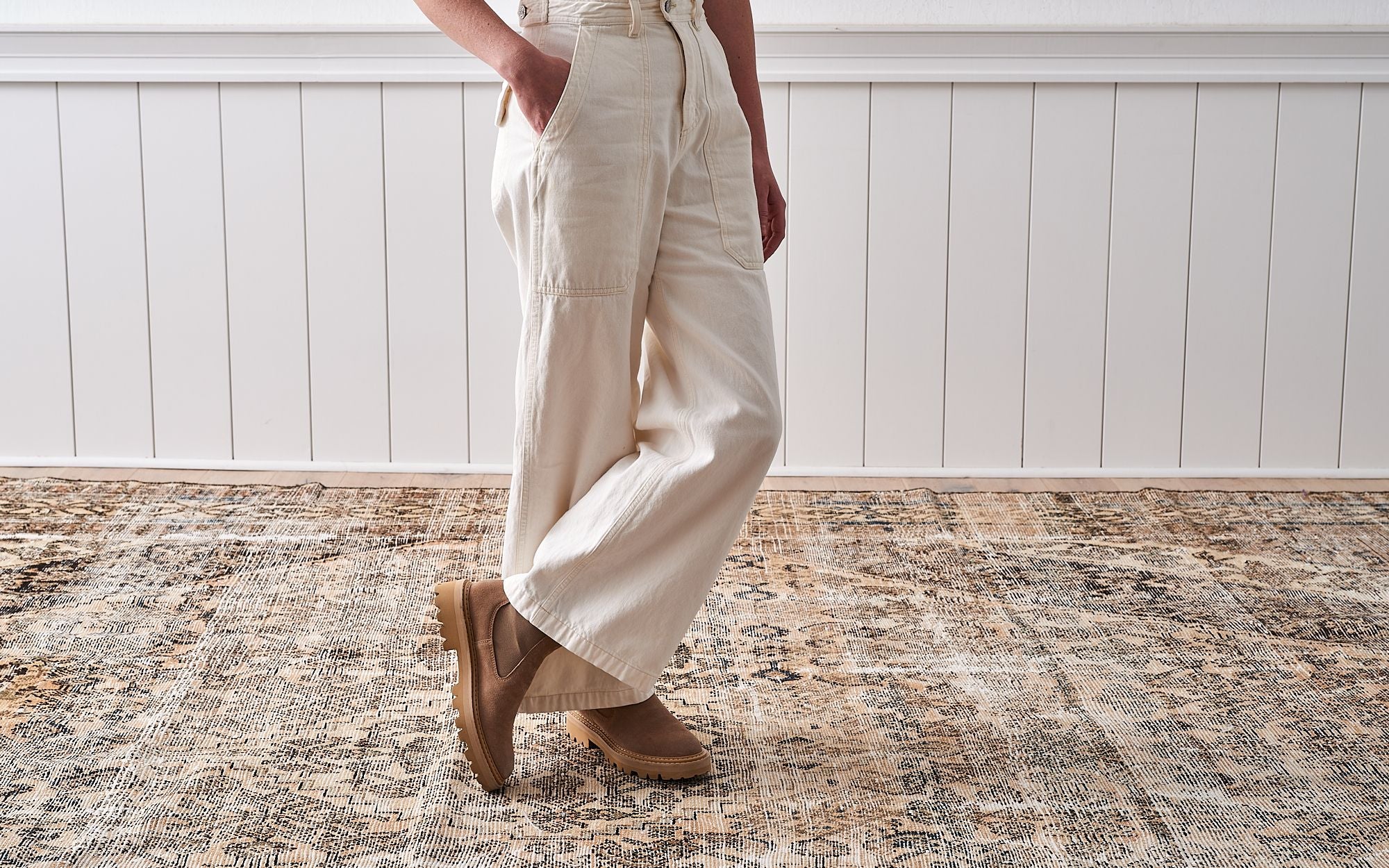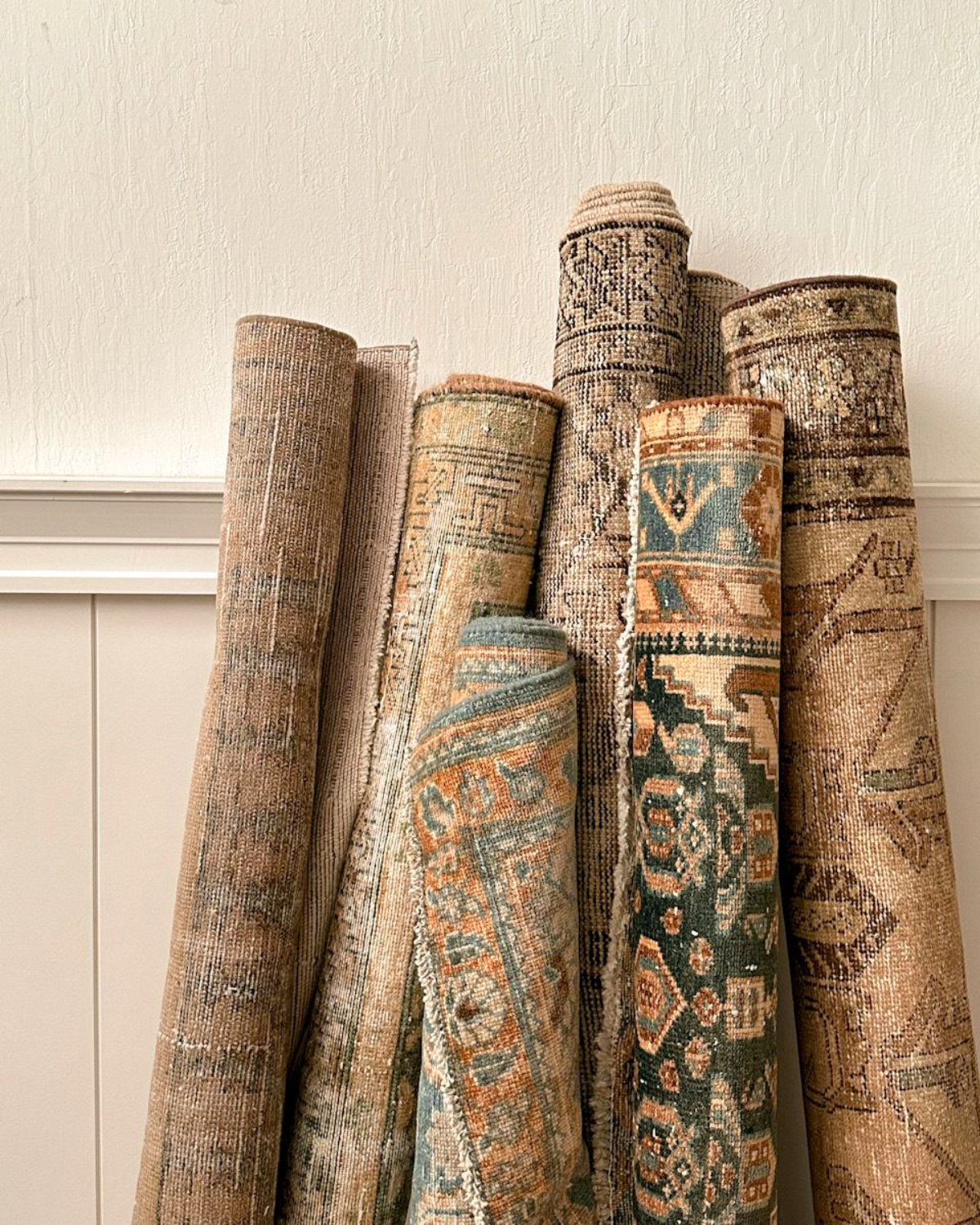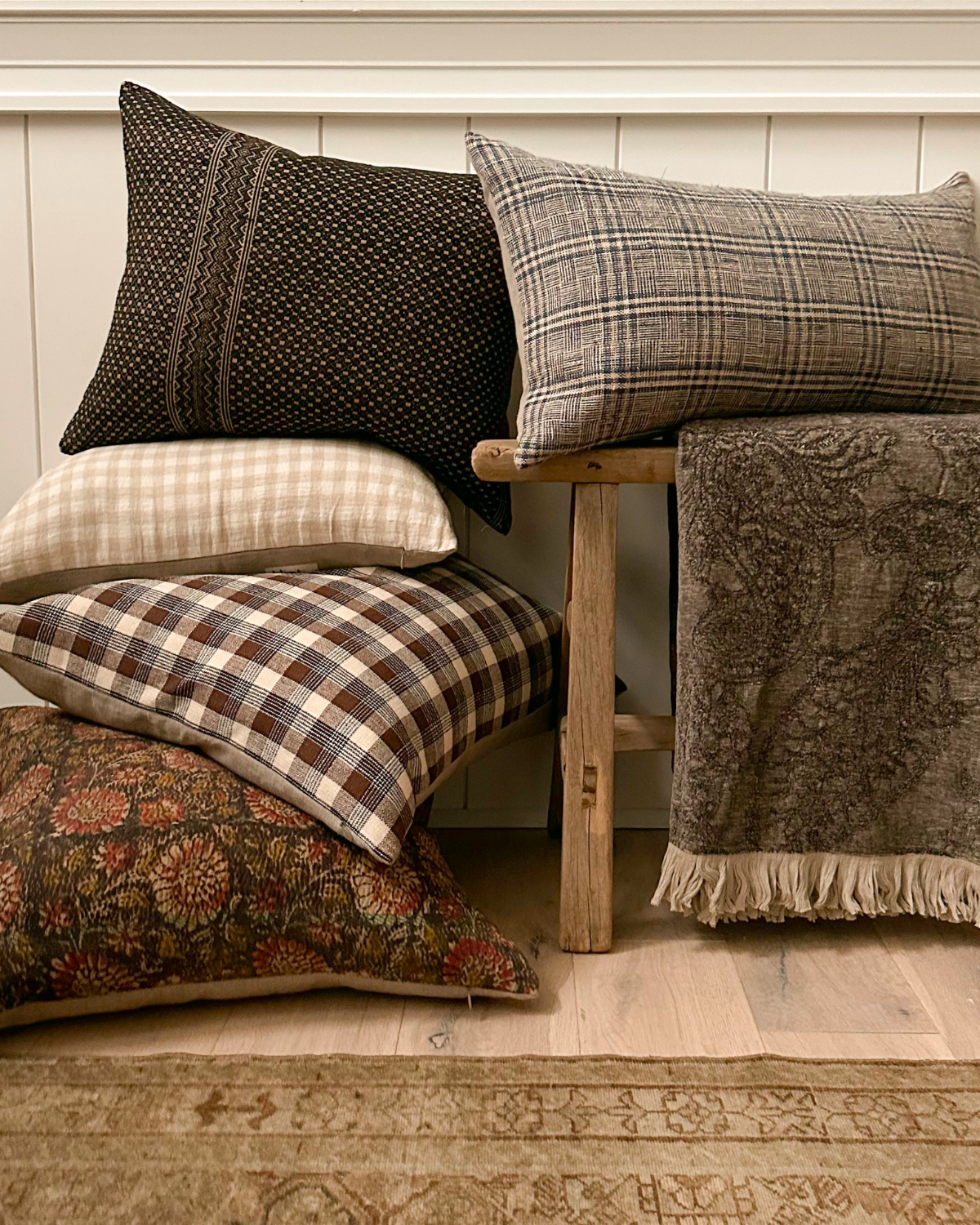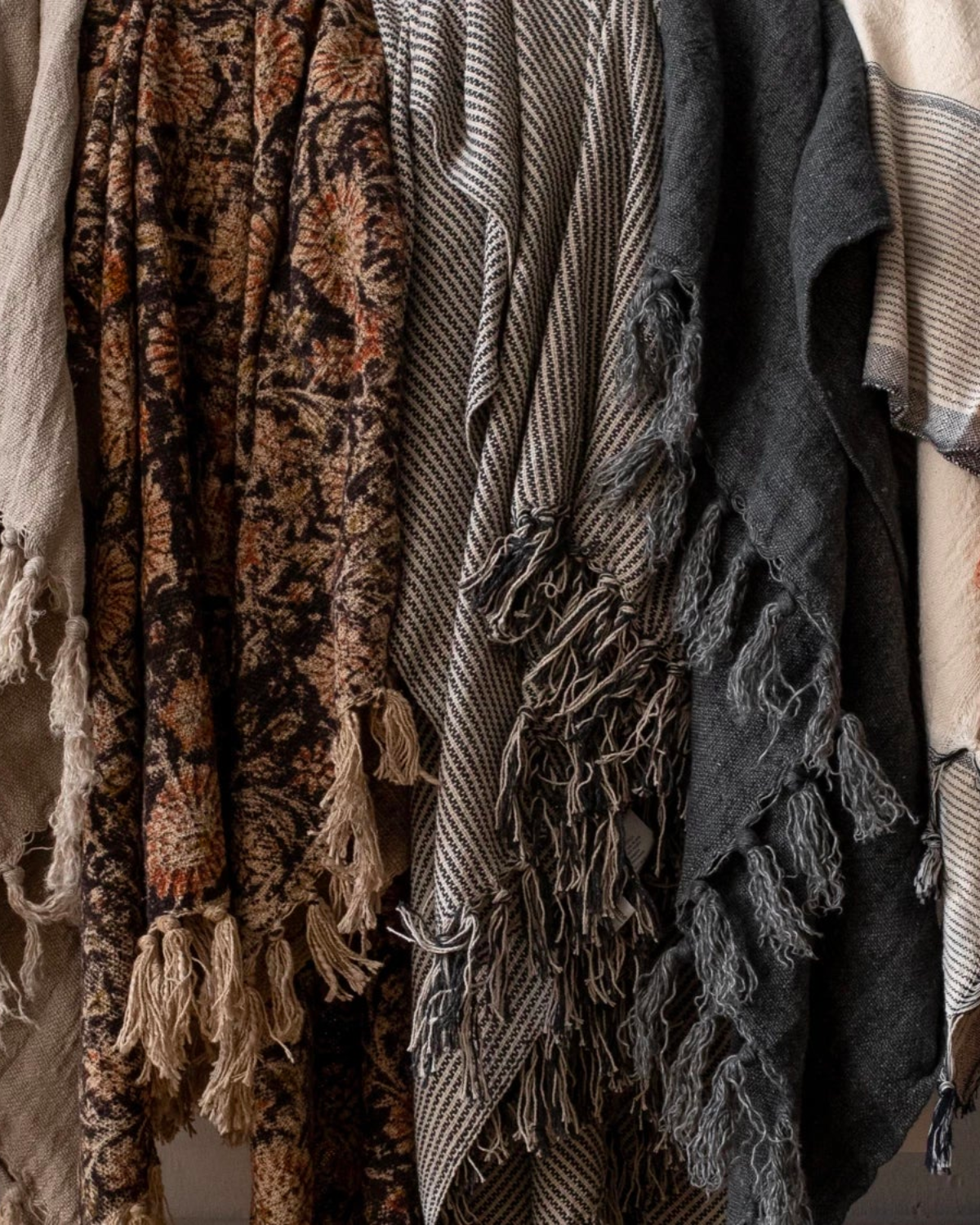The art of textile mixology is an ever-evolving ritual of layering-in your personal style to create a well-collected, cohesive, yet uniquely-yours look and feel. While there is no one-size-fits-all approach to styling textiles, we’ve put together this guide to highlight some of our favorite ways to create a balanced mix of pattern scale, intentional color stories, and richly tactile experiences in any room of your home. Follow the below tips to bring an effortlessly welcoming, cozy ambience for both you and your guests to enjoy.

Pattern Play: How to Mix Textiles with Ease
Master the art of textile mixology with our guiding best practices—your blueprint for weaving pattern, color, and texture into a cohesive yet distinctly personal style.
-(3).png?v=1695860326950)
Understanding Color: With so many choices available when it comes to pattern, color, material and more, it can sometimes feel daunting to begin creating your primary color story. The key is to recognize the primary hue that subtly commands your room, and use that as your north star to inform the remaining textile decisions. This main color may be a prominent hue of your rug, wall color or art palette, upholstery, or overarching wood tones. Good design commands a deep understanding of the dynamics of every pattern and color at play- but with these simple rules of thumb you can easily create the rich textile experience you’ve been craving in your own space. When styling client installs, refreshing our storefront, or styling our own homes, we find that sticking to two to three shades or hues can often be more impactful than a highly varied palette. Whether you choose to commit to monochrome or harmonize in a trio of tints, the key is precision of relevant or complementary colors. Some of our favorite color pairings for maximize textile synergy: * Fawn, Mocha, Beige * Rust, Ivory, Espresso * Olive, Ochre, Charcoal * Beige, Rust, Teal * Walnut, Ivory, Charcoal
-(7).png?v=1695860528671)
-(5).png?v=1695860543088)
Understanding Patterns: Some patterns boast a dominating attention, while others offer more of a complementary backdrop. We like to use larger scale patterns as the supporting foundation, with boldly detailed, smaller-scale motif pillows as the focal point to the eyes. Once you strike the right balance between pattern scale you will be delighted at how harmonious a seemingly unexpected duo can collaborate so well rather than clash. Mixing patterns can be compared to rhythm in music. Patterns dictate the tempo, the movement and the energy of the composition. The allure often lies in contrasts and a bold motif set against a delicate backdrop forms a visual treat. It may seem daring to pair stripes with florals or global patterns with traditional motifs, but in such combinations often resides the magic of well-intended design. Seek out to explore combinations of patterns that you may not have typically thought to opt for, as we suspect you may find yourself reveling in these unexpected pairings.




Understanding Texture: When you think about the handful of most memorable dishes you’ve ever consumed, what stands out more than the rich combination of senses involved? It’s not only the base taste, but it’s all of the varied after-notes, it’s the way it smells as it hits your tongue, it’s the consistency and temperature, all along with the way it was presented to you. Creating a well-designed textural story demands a synergy of senses and beckons to be felt along with visual admiration. When choosing key pieces, from rugs to throws to pillows and more, remember to consider their tactile dimension. Expand your experience with texture pairings such as soft linen with chunky weaves, fringed detailing and uniquely vintage accents, velvet-like textiles with rustic weaved blends and more. Don’t be afraid to experiment with infusing varied textures into your space as it will come together as a beautifully curated look in the end. A room layered with varied textures promises warmth, visual intrigue, and completes the story that colors and patterns alone can't tell.
"Textiles aren't just about the way they look. Well-styled pairings form an artful blend of senses."
.png?v=1695860874373)
Understanding Size and Proportion: Often overlooked in addition to visual aesthetics is the varied size combination that you choose to curate. While colors, patterns, and textures often steal the limelight, the subtleties of size and proportion work diligently in the background to round out the look. Every talented designer knows a room adorned with textiles of varying sizes feels alive, be it through the grandeur of a sprawling rug or the quiet charm of a petite cushion. Even within a single pillow story there should be varied sizes of squares, lumbars and more layered in to create sensory depth. Ensuring your textiles speak to the room's scale is imperative. Large spaces can command bolder patterns, while cozier corners might best be styled with softer motifs and scales of textiles.
-(9).png?v=1695860727261)
Conclusion: As you blend textiles into your own space, reference this guide as a starting point to carry out your design. Remember that a deluge of patterns or colors can easily overwhelm the space. Balance is the cornerstone of sophistication, knowing when to give and when to pull back. Edit your core color palette down to two or three colors, and always consider a varied approach rather than a more static or safe combination. You’ll be pleasantly surprised what a few unexpected pattern pairings and unique textures can do to transform your space into your dream designer home! It's important to note that in this intricate art of textile mixology, these steps aren't rigid rules but rather fluid movements of intuition, creativity, and practice. Use these philosophies but don’t lose sight of your own personal style. Cheers to your next textile styling project!
QUICK NOTES
Aim for two-three colors in your palette. Identify the main hue of the room & add two additional primary hues to reference when selecting textiles.
Do not be afraid to mix patterns! Now's the time to trust the process.
Infuse varied textures throughout to create unexpected visual and tactile dimension.
Play with scale where warranted; incorporate elements of varied sizes into your space to create a well-collected look.
-(11).png?v=1695860783601)